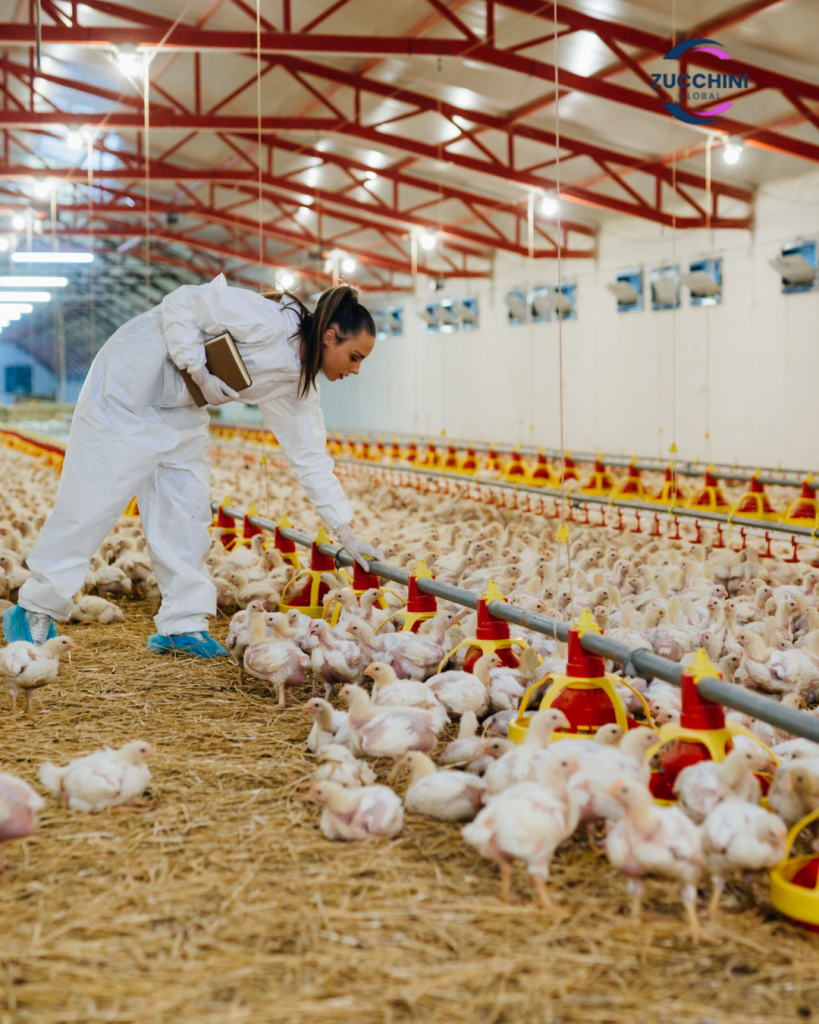
In today’s fast-paced agribusiness world, traditional poultry farming methods are becoming less sustainable. Farmers are under pressure to increase production, reduce costs, maintain animal health, and meet market demands all at the same time.
The challenge? Manual operations are dragging down productivity and profitability.
The solution? Embracing automation.
This article explores how smart technology and automation can help poultry farms streamline operations, improve efficiency, and significantly reduce costs without sacrificing quality.
Shifting the Mindset: From Labour-Intensive to Data-Driven Poultry Farming
Many poultry farms still rely on manual processes—handwritten records, guesswork, and overworked staff. But the most successful farms are adopting an automation-first approach where data and machines handle repetitive tasks.
This isn’t just about convenience, it’s about staying competitive.
Key Areas Where Poultry Automation Pays Off
Here’s how smart automation can transform core areas of poultry operations:
1. Automated Feeding Systems
Automated feeders deliver the right amount of feed at scheduled intervals, reducing waste and ensuring optimal bird nutrition.
Benefits:
- Prevents overfeeding and underfeeding
- Reduces feed waste, which can be up to 30% of operational costs
- Cuts down on manual labour
Tools to explore:
- Big Dutchman Auger Feeders
- SKA Poultry Feed Systems
2. Smart Watering Systems
Automated watering systems ensure clean, controlled water flow with filters and leak detection to maintain consistent hydration.
Benefits:
- Prevents disease from contaminated or stagnant water
- Lowers water bills
- Improves bird growth rates
Examples:
- Lubing Automatic Watering System
- Ziggity Poultry Watering Systems
3. Climate Control and Ventilation
Automated systems regulate temperature, humidity, and airflow for optimal bird health and productivity.
Benefits:
- Reduces heat stress and mortality
- Saves on energy costs
- Ensures year-round consistency
Popular solutions:
- Munters Climate Controllers
- DACS Ventilation Systems
4. Lighting Automation
Programmable lighting replicates natural cycles to improve bird behavior and egg production.
Benefits:
- Enhances egg laying performance
- Reduces electricity usage
- Eliminates manual switching
Systems to consider:
- Agrologic Lighting Controllers
- Chore-Time Programmable Timers
5. Smart Surveillance and Security
AI-enabled surveillance helps farmers monitor animal behavior, prevent theft, and manage farms remotely.
Benefits:
- Enhances farm security
- Detects unusual activity early
- Reduces reliance on manual oversight
Tools include:
- Hikvision Smart Surveillance
- Ezviz Farm Monitoring Cameras
6. Inventory and Feed Stock Management
RFID and cloud-based software simplify inventory tracking—from feed and vaccines to consumables.
Benefits:
- Avoids stock shortages and overordering
- Tracks expiry dates
- Improves budget control
Software solutions:
- Poultry360 ERP
- Farm ERP
- Odoo Farm Management Module (customized)
7. Automated Egg Collection and Sorting
Smart belts and sensors collect, grade, and package eggs efficiently.
Benefits:
- Reduces egg breakage
- Boosts packaging speed and accuracy
- Enhances hygiene and consistency
Recommended tools:
- MOBA Egg Grading Machines
- SANOVO Egg Processing Systems
Real ROI: The Financial Impact of Automation
A medium-sized poultry farm that automates feeding, lighting, and climate control can expect to see major savings:
| Area | Manual Cost (Monthly) | Automated Cost | Monthly Savings |
| Labour (3 staff) | ₦300,000 | ₦100,000 | ₦200,000 |
| Feed Waste | ₦500,000 | ₦100,000 | ₦400,000 |
| Electricity | ₦200,000 | ₦120,000 | ₦80,000 |
| Total Saved | ₦680,000 |
That’s over ₦8.1 million saved annually—without compromising bird welfare or output.
Why Many Poultry Farms Still Resist Automation
Despite the benefits, barriers remain:
- High upfront cost: But this is an investment with long-term returns.
- Limited tech experience: Modern tools are mobile-friendly and intuitive.
- Fear of job loss: Automation often leads to better roles and reskilling, not layoffs.
Forward-thinking farms are already using tech to upskill workers and create more value.
Final Thoughts: Automation Is No Longer a Luxury
If your poultry business still relies on humans to perform tasks that machines can do faster and more accurately, you’re falling behind.
The real question isn’t if you should automate, it’s when.
Read: Automation and Employee Productivity: A Mutually Beneficial Partnership
Getting Started with Poultry Farm Automation
Start small. Whether it’s automating your feeding system or upgrading your lighting controls, each step will move you toward a smarter, more efficient farm.
Need help identifying the right tools or building a roadmap?
Let’s chat. Drop a comment below or get in touch to explore tailored automation solutions for your farm.


